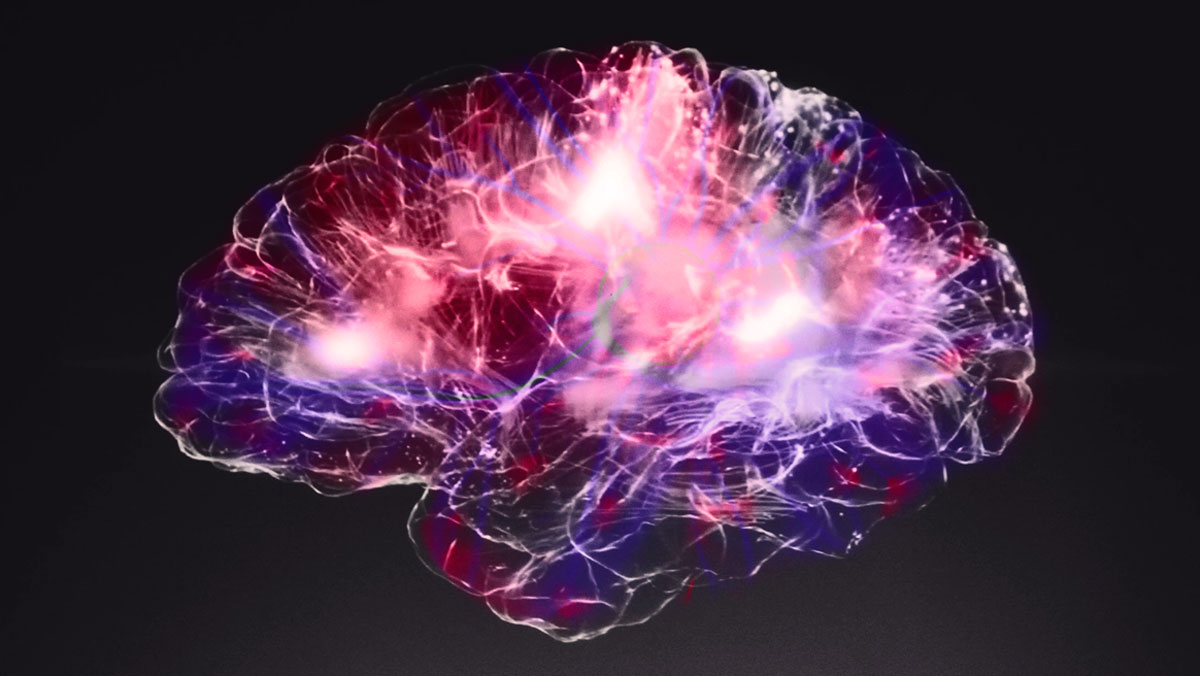
Enlightened brand leaders are wrapping their heads around methods to understand how instinctive emotion influences the behavior of their desired consumers. Brandingmag spoke with Dr. Cyrus H. McCandless, whose job is to see deeper into the heads of consumers as Vice President of Scientific Discovery & Innovation at Sentient Decision Science, a leading behavioral science research company.
I [Kevin] had a chance to work with Cyrus and his team at Sentient over a 3-year period where we co-developed a research capability that earned the 2018 EXPLOR Award from the Insights Association for the year’s most innovative research capability. Throughout that work, I had a chance to crawl into the depths of Cyrus’ brain which yields endless intrigue, and my desire to interview him for Brandingmag.
Cyrus is a PhD in Neurobiology with four degrees spanning the psychological, behavioral, cognitive and computational, and medical neurosciences. His work has been funded by the National Institutes of Health, National Science Foundation, U.S. Department of Defense (DARPA), and over 100 household-name brands. In his ‘free time’, he’s actively involved with research on Deep Brain Stimulation for movement disorders.
Brandingmag: Let’s get inside the mind of Cyrus McCandless, PhD, Neuroscientist – What makes you tick and what fascinates you?
Cyrus McCandless: I’ve been obsessed with understanding what makes us tick for almost 30 years – specifically, how our brain’s motivational circuitry interfaces with our sensory, cognitive, and behavioral functions. How do we decide to do the things we do? Where do those motivations come from? Why do we pay attention to this instead of that? How is all this translated into behavior? More fundamentally, why do we do anything at all?
Figuring out ‘what makes us tick’ has led me on extraordinary adventures in neuroscience and the ‘bleeding edge’ of neuro-technology, and I feel perfectly at home continuing this work in the insights industry. I’ve been implausibly lucky to have studied under and worked with renowned scientists, outstanding mentors, and brilliant collaborators; and I’m grateful to the clients and colleagues who’ve enabled me to continue this work in the ultimate laboratory: the real world.
Aside from continuing to work on our more challenging client research questions, my focus over the last few years has been new product development – particularly, building advanced behavioral and emotional measurement tools. We recently released a comprehensive quantitative ad-testing platform with implicit, emotional, and behavioral components, and I developed the Deep Neural Networks this platform leverages to recognize facial expressions of emotion. We’ve also released findability and tachistoscope (“T-scope”) testing platforms, and there’s more to come!
 Bm: What’s the difference between the research you conduct and traditional consumer research that brand leaders might be more familiar with?
Bm: What’s the difference between the research you conduct and traditional consumer research that brand leaders might be more familiar with?
CM: Primarily, we conduct behavioral experiments to measure attitudes and determine the causes of choice behavior, rather than relying solely on respondents’ self-reported evaluations. For example, we combine respondent behavior in conscious discrete choice tasks with scientific measurement of subconscious emotional responses to the elements included in the study. This emotionally-weighted model, which takes into account both deliberative choice behavior and instinctive emotional responses, predicts real-world purchase behavior much more accurately than discrete choice data alone.
Similarly, when testing advertising, we use academically-validated facial expression and eye-tracking techniques to gain moment-by-moment insight into viewer response. We then combine this with discrete choice and implicit data to identify the narrative elements driving changes in product preference and brand attitudes.
Bm: What’s the relationship between our subconscious instinctive responses and our conscious decisions and behaviors?
CM: That question is worth a thousand PhD dissertations! But one overarching and now-familiar insight is that our subconscious is very ‘fast’, in the sense that it acts first, and does a tremendous amount of ‘front-running’ to organize our perceptions and ease decision-making.
The brain works hard to filter or simplify the vast amounts of data our senses are constantly exposed to. Our conscious evaluations tend to accept the ‘suggestions’ provided by our subconscious, and it takes effort to ‘step back’ and re-evaluate them. Our brains are brilliant ‘summarizers’ of experience. As such, we have implicit biases, for better or worse, and understanding them enables more predictive insight.
For example, unconscious processing begins the moment information enters the brain, while conscious processing begins about 100-500 milliseconds (0.1-0.5 seconds) later, depending on the kind of stimulus (and the information our subconscious ‘filters’ let through to be consciously ‘noticed’). Many things happen in the first milliseconds after we see/hear/feel something that ‘sets the tone’ for what happens next. Our clearest view of subconscious processes comes from studying what happens immediately versus later.
Bm: What is the most important thing that brand leaders should understand about the human subconscious?
CM: Brand leaders should understand that we aren’t subjectively aware of most of what our brain does, but we now have very effective ways of studying the unconscious processes that shape our conscious experience, our behavior, and our choices.
What we continue to find is that what really motivates most of us to do most of the things we do, most of the time, has less to do with conscious reasoning than we thought. That disconnect – between our self-perception and our empirical understanding of cognition and behavior – is evident in the way many brand leaders continue to approach insights, despite decades of scientific advancements.
Successful brand leaders are drawn to behavioral science because it’s eclipsed what can be self-reported by consumers or intuited by brilliant observers. By understanding both the rational and ‘irrational’ aspects of behavior, and leveraging modern research tools, we can produce more accurate predictions and more useful insights.
Bm: What do you help brand leaders understand and do better?
CM: I can help them make better, more consistently successful strategic and tactical decisions, through better measurement, prediction, and explanations of how and why consumers respond to brand activities and market conditions. The facts of human behavior aren’t as intuitive as they seem – reliable answers require an informed perspective and disciplined research design.
Bm: It’s been proven over and over again that emotion is the largest driver of loyalty for brands. Can you help us understand the science behind why?
CM: Emotion is a powerful driver of our choices, perceptions, conscious considerations, and the narratives we construct about them. That’s because emotional responses and cognitive heuristics get to respond to and frame our experience before we’re conscious of it. These functions, many of which arise from the limbic system, tell ‘higher brain areas’ what seems important, and suggest how new information probably should be evaluated.
This is especially true when we make purchase decisions for inexpensive products, where emotion plays an outsized role. For more expensive, complex, or important purchases, emotions can still keep you strongly loyal to a brand; but it’s also true that when we’re very involved with an important purchase decision, such as a car or a house, or purchasing planes for an airline, conscious deliberation does play a larger role. Still, the most rational evaluations we make depend on a million imperceptible cognitive ‘shortcuts’ that function just like emotions.
Bm: What are some examples of how instinctive emotions guide our decisions?
CM: Emotions, heuristics, and biases produce regular patterns of deviation from objectively rational judgment but they serve the important purpose of simplifying our lives. In fact, the decisions we make every minute of every day would be paralyzingly complex without these mental shortcuts.
Our brains are brilliant ‘summarizers’ of experience. As such, we have implicit biases, for better or worse, and understanding them enables more predictive insight.
An important example is the affect heuristic, which is simply the emotional ‘signal’ that says “this seems right, let’s proceed”, or “this seems wrong, let’s pause”. We tend to dismiss or embrace new ideas or products based on first impressions, and we continue to run with them unless they’re very obviously incompatible with our current worldview. You can’t overstate the power of first impressions in terms of how they set expectations and color subsequent reasoning.
Another is what I call ‘de-selection’: We filter out of much of the information available to us at any given moment, allowing us to focus on what’s important and ignore the rest. Just stand in front of the soup display at your supermarket longer than normal, and the variety of soups available will seem to expand until it seems unbelievable that shelving such variety makes any business sense at all. You don’t normally notice this variety, because your brain does an outstanding job of helping you focus.
Bm: What are the most important things brand leaders can do to strengthen brand engagement & loyalty?
CM: Understand why consumers really choose your brand over competitors. Very often, the most powerful reasons are emotional or intuitive.
We’re not great at explaining how we feel or why we feel that way, or even articulating the conscious aspects of our decisions. Yet, brands often ask consumers to explain their choices. Unfortunately, we aren’t completely reliable witnesses.
Knowing how consumers really feel about your brand, before their conscious mind can intervene, and knowing what their decision process looks like objectively, offers explanatory power beyond what you can learn from traditional surveys. These days, many new tools can help you tap into how instinctive emotions influence behavior, but a great place to start is with questions designed to yield deeper insight.
Bm: For brand leaders who want to do more with behavioral science insights and research, what do you suggest?
CM: Don’t believe that a behavioral science ‘principle’ you read about in a blog or book or magazine article can be straightforwardly applied to any circumstance that seems similar. These things may seem simple or even obvious when you hear them, but ask yourself: “If it’s obvious, why wasn’t I already using it effectively?” You really need to know why the principle works, under what conditions it’s effective, and be able to spot anything else you’re doing that might undermine or enable it. Remember: the scalpel doesn’t make the surgeon.
Get really good advice, from someone who understands the field, knows what they don’t know, and is willing to stick to what they do. You’ll get a lot further with one simple, proven fact or insight than with many armchair conjectures. You may even have data in-hand that doesn’t seem very useful to you, but that someone steeped in behavioral science research and application can extract valuable insight from.
Importantly, seek a more rigorous understanding of what makes people tick, ask questions designed to elicit more reliable answers, and tap into research capabilities that are proven effective at identifying and measuring subconscious drivers of behavior.
Overall, don’t miss out on advanced behavioral science insights and applications that can actually transform your business by strengthening your brand’s relationship with consumers.
Cover image source: Alina Grubnyak